Ireland was one of the first countries I ever added to my travel bucket list.
Perhaps it was the hopeless romantic in me thinking I’d meet a handsome man, like in P.S. I Love You, or maybe it was the sheer number of beautiful photos that left me captivated.
Either way, I was deeply drawn to Ireland’s culture and natural landscapes from a young age. So much so that I was determined to get there as soon as I possibly could, so when the opportunity arose for me to study abroad in Ireland, I was filling in my application form within minutes.
Yes, I achieved my lifelong goal of visiting Ireland and before I knew it, I was taking my first steps in this beautiful country, pinching myself that I was actually living there now.
I didn’t want to squander that opportunity, which is why I spent almost every weekend exploring the Emerald Isle from top to bottom. It wasn’t a surprise to discover that travelling across Ireland didn’t come cheap, but I wouldn’t say it was overly expensive either. I averaged around €156/$170 per day while I was travelling across the country, with most of that money being spent on accommodation and food.
One of the best ways to see Ireland and save money is to rent a car and drive around at your own pace, but I joined plenty of bus tours, too. Taking tours cost more, but it meant I didn’t have to worry about driving or navigation either. In the end, these were some of my favorite weekends — and definitely worth the money.
Whether it was driving along the winding, postcard-worthy clifftop roads that had me feeling like I was on the edge of the world or drinking with locals in a teeny-tiny pub in Dublin, Ireland was all that I dreamed it to be and more.
After my most recent trip last year, I decided to finally sit down and share exactly how much you can expect to spend while travelling in Ireland, so let’s get started.
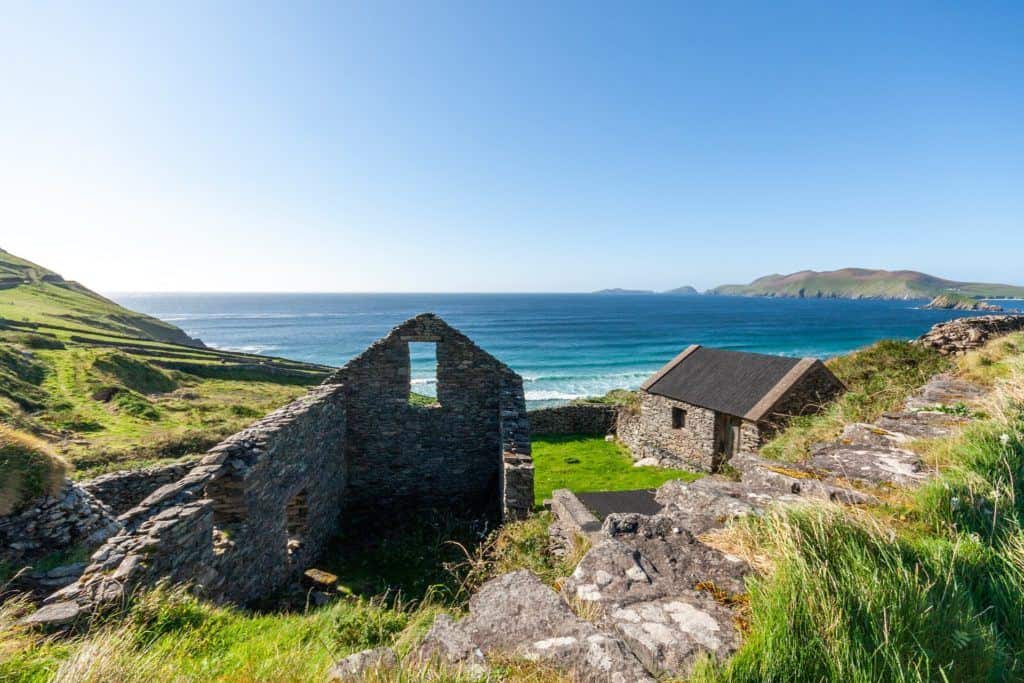
What’s Included in this Post
This budget breakdown covers how much I spent on accommodation, transportation, activities, and food while I travelled around the country.
I’ve not included my flights into and out of Ireland as this is going to vary significantly based on where you’ll be arriving from.
The amounts in this guide are listed in Euros and U.S. dollars, simply because the vast majority of readers of this site are from the U.S. and close to a million Americans visit Ireland each year.
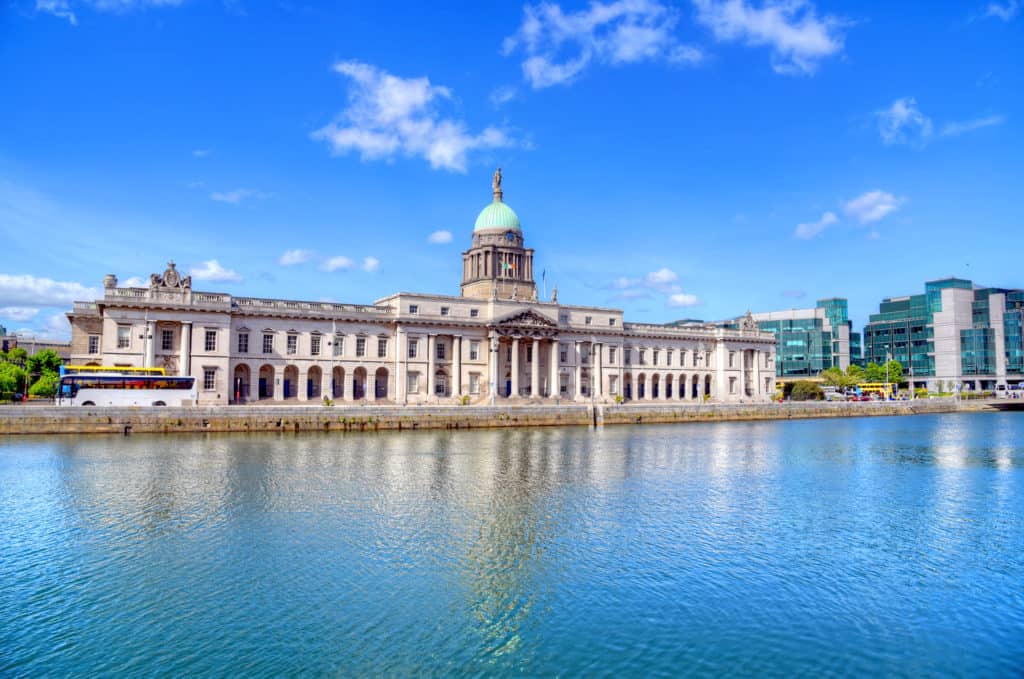
How to Save Money on the Cost of Accommodation in Ireland
As always with travel, it’s possible to cut your accommodation costs down to zero if you have the time and patience to seek out an offer.
Couchsurfing exists in Ireland and allows you to stay with a local for free, usually sleeping on their sofa and enjoying a local’s insight into life in their country. It’s not the most comfortable of living situations, but if your budget’s tight, it’s worth sending out a few requests to hosts to see if anything comes of it. You can browse through the 80,000+ Irish hosts on the Couchsurfing site.
Housesitting is a great option for free accommodation. This is where you’ll take care of somebody’s house while they’re away, and usually look after their pets, too. It’s best for long-term travellers or retirees: you can’t pick and choose dates and destinations, so you need to have a lot of flexibility as to where you go and at what time of year. If you do have that freedom, it’s a wonderful way to cut down your travel expenses, soak up some home comforts, and live like a local for a while. I have friends who have housesat in castles before! For free! Trusted Housesitters is the best site for getting started with housesitting, as they have the highest number of listings.
I’m suspecting, though, that for most of you, you’re not interested in the free accommodation and just want somewhere clean, safe, and affordable to rest your head each night. If that’s the case, there are several options available for you.
I will make a quick note, however, that post-pandemic, the cost of hostels in Dublin is obnoxiously high. As in, while looking for a hostel in the city for July 2023, the cheapest price I could find was €100 for a dorm bed or €200 for a private room.
Yes, really. It’s something I’ve encountered in numerous countries since the pandemic, but it did seem to be particularly bad in Dublin.
Away from the capital and outside the peak summer travel season, though, hostels in Ireland are more sensibly priced. You can expect to spend around €40 a night for a dorm bed for a well-reviewed hostel in Ireland, with the price increasing to slightly about €60 a night for the absolute best of the best.
When it comes to private rooms in hostels, you can expect to spend around €120 a night for a clean, basic room in a good location, so if you’re travelling with a friend or partner, there’s not always a lot in it compared to two dorm beds. €150-190 a night will get you an exceptionally well-reviewed private room in a hostel or hotel.
I use HostelWorld to find the cheapest hostels, as they tend to have the greatest number of listings at the lowest prices.
And, of course, there are always hotels, which are usually priced about the same as a private room in a hostel, but typically have a few more comforts. You’ll pay €120-200 a night for a decent, clean, mid-range property in a central location, depending on where you are and when you’re traveling. I always use Booking, as they have the most accommodation options for the cheapest prices.
The Cost of Accommodation in Ireland
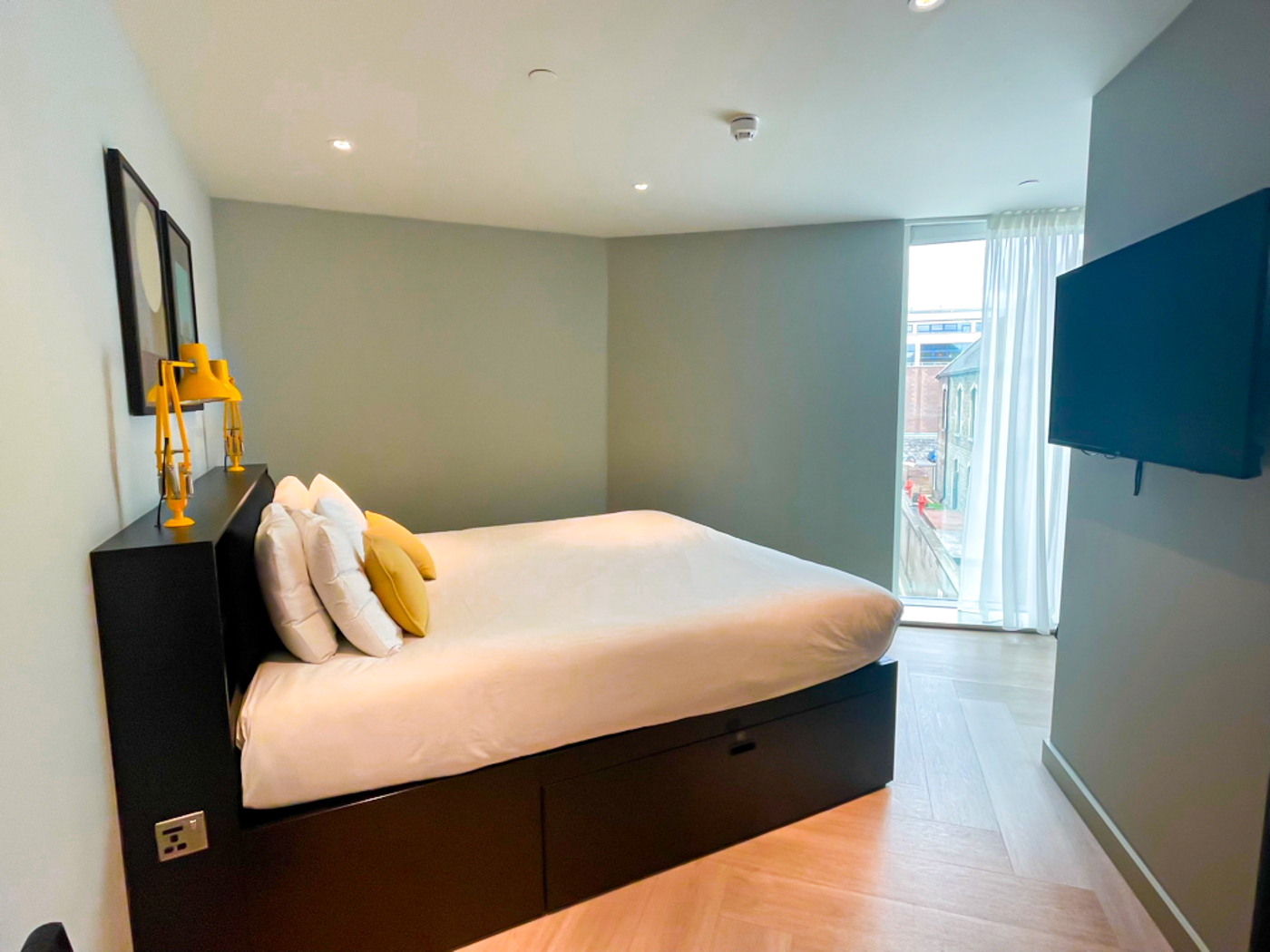
There’s lots of wonderful places to stay in Ireland — from B&Bs to castles to hotels and hostels.
If you’re even toying with the idea of staying in a castle (I know: the ultimate fairy-tale dream) then you’re looking at around $200-$600 a night for the higher-end, luxury versions. Honestly, I think Ireland is a fantastic place to splurge on accommodation if you can afford to.
I always like to share the accommodation I stayed in on my travels, as well as recommend alternatives when mine weren’t so wonderful. Everywhere I recommend below has excellent reviews and offers great value for money.
Here’s my list of my favourite accommodation options in Ireland:
Dublin: Staycity Aparthotels Mark Street (€180 a night)
Dublin is unbelievably expensive right now, so I really felt like I lucked out when I discovered this modern hotel. Not only is it in the best location in town — within walking distance of Temple Bar and all the main tourist attractions — but the staff are wonderful and the rooms comfortable. The heating and air conditioning worked well, the rooms were silent, and it felt as though we were staying in a brand new hotel. It’s one of the cheapest accommodation options in Dublin while also being one of the best reviewed. I wouldn’t consider staying anywhere else!
Galway: The Stop B&B (€219 a night)
As far as I’m concerned, Galway is a must-visit destination on any trip to Ireland. Its lively atmosphere, vibrant street busking, and brightly colored buildings make it one of my favorite cities: it’s one of the places I always revisit whenever I’m in the country. I stay at the Stop B&B when I do: it’s easily one of the best-rated options in town that’s still in a great location a few minute’s walk from the city centre. The rooms are absolutely spotless, stylish and modern without feeling generic, and Russell (the host) couldn’t have been more welcoming. Shoutout to the delicious included breakfast as well: it was better than what I had in most restaurants!
Cork: Hotel Isaacs Cork City (€169 a night)
I really enjoyed my stay at Hotel Isaacs for the couple of nights I spent in Cork. It’s one of the more affordable hotels in the city, but is still in an ideal location, just a five minute walk from the centre and ten minutes from the bus and train stations. It’s nice and quiet despite being right in the heart of things, and my room was bigger than many I’ve stayed in in Ireland. There’s a good onsite bar but in the end I didn’t spend much time there: the staff’s recommendations for traditional pubs nearby were so good that I spent my evenings there instead!
Dingle: Murphy’s Pub and Bed & Breakfast (€135 a night)
The stunning Dingle Peninsula is one of the most beautiful parts of the country; I don’t think I’ve ever seen such vibrant shades of green anywhere else on the planet! You’ll need at least a couple of days to fully explore the area, and I’d recommend staying at the delightful Murphy’s Pub in Dingle overnight while you do. Right in the middle of town and on the waterfront, you couldn’t ask for a better location to explore the town from. Not that you even have to leave the building if you don’t want to: one of the big benefits of staying in a pub is only having to walk a few steps to dinner, and that’s equally true here! My room was large, spotless, and very quiet considering it’s above the bar, and the included breakfast was super-tasty and set me up for the rest of the day. I really enjoyed my stay at this cozy family-run pub: I just wish I’d had another night there!
Belfast (Northern Ireland): Citi North Guesthouse (€94 a night)
Belfast is one of the most interesting cities I have been to. It’s deeply cultured, rooted in history and close to some of the most stunning natural landscapes I’ve ever seen. And if you’re planning a stint in Belfast, you need to stay at Citi North. Not only is it one of the most inexpensive guesthouses in town, but it also offers up one of the best breakfasts in the city — included in the price, of course. And it’s the small touches that really make the difference here, whether it’s having your bed made up and linens replaced while you’re busy hitting the streets of Belfast, receiving local recommendations on how to make the most of your vacation, or sleeping on a bed so comfortable that it feels like lounging on a cloud. It’s also in particularly handy location for boarding the hop on hop off tour or meeting up with one of the black taxi tours.
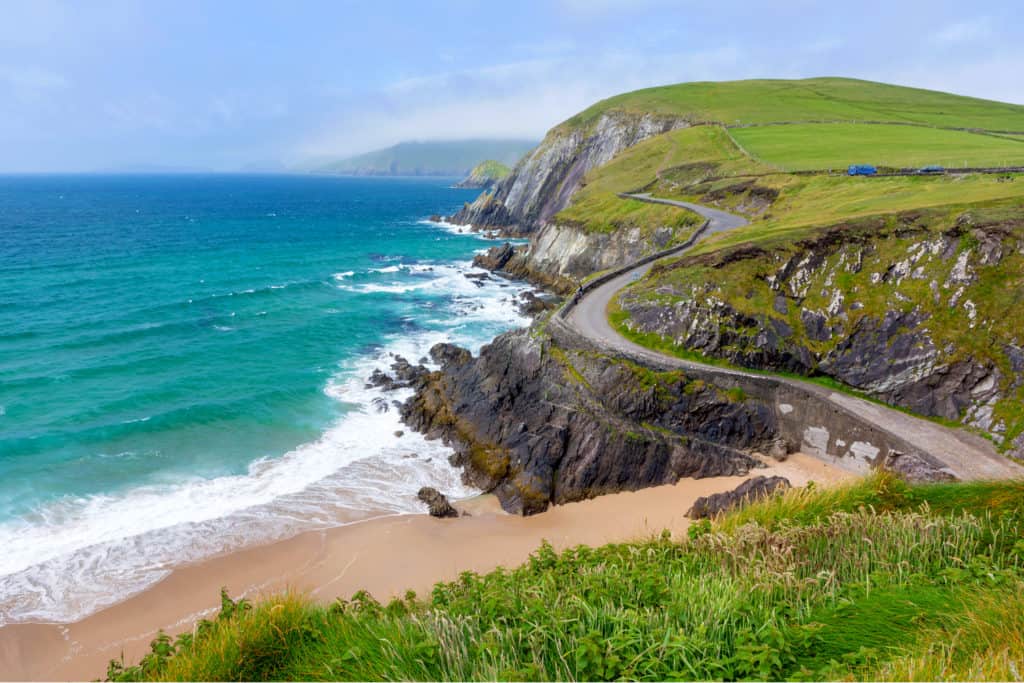
The Cost of Transportation in Ireland
Transportation around Ireland isn’t just a way of getting around, it’s an attraction in and of itself. For the most part, I used buses to get around the country when I hadn’t rented a car.
Bus and Train — The bus will probably be your main way of getting around if you don’t have a driver’s license. I found the bus system in Ireland to be very reliable and easy. and it covers pretty much anywhere you’re likely to want to go. The buses are quite comfortable and modern, they almost always leave on time, and most even have free Wi-Fi on board! And because Ireland is a pretty small island, the costs are actually quite reasonable.
The main bus companies are Bus Éireann, Citylink, Aircoach, and Go Bus. Bus Éireann is the biggest and best of them, with reasonable prices and routes that cover the entire country. Plus, WiFi, power sockets, and comfy seats!
If trains are more your thing, they can also be a good way of getting around, especially on routes that go mostly along the coast: there are some epic views to be had! Tickets do tend to cost a bit more than the equivalent bus trip, though, and the trains don’t run as often as the buses or to as many places.
That said, shorter trips are still quite cheap: I paid €8.35 for a walk-up ticket from Enniscorthy to Rosslare, which wasn’t a lot more than the bus.
You can buy tickets on the day from self-service machines and ticket counters, or in discounted advance tickets from the Irish Rail website. You just collect your ticket from the machine when you get to the station.
Here are some of the typical bus and train route cost breakdowns, booked a few days in advance:
- Bus from Dublin to Galway: €15/$17
- Bus from Dublin to Cork: €15/$17
- Bus from Dublin to Belfast: €11.50/$14
- Train from Cork to Killarney: €12/$13
- Train from Killarney to Galway: €17.33/$19
City Travel — This mostly pertains to getting around Dublin. I found the city centre to be compact enough that you could easily walk places (if you’re wearing comfortable shoes of course!). Unlike most European cities, Dublin doesn’t have an underground system, so your best bet is to use the extensive public bus network.
If you’ll be using public transport a lot, pick up a LEAP card: you can buy and top up at ticket offices and most convenience stores. You’ll save up to 30% on the regular single ticket cash price, although note that the card has a €5 deposit and €5 minimum topup.
With your card, you’ll pay a €2 for most bus trips in Dublin, with a daily cap of €5.60. You can also use your LEAP card towards the train, tram, or Dublin bike rental. It’s worthwhile if you’re traveling beyond Dublin as well: you can use it in other cities like Limerick, Galway, and Cork.
Car Rental — Like I said earlier, if you have a driver’s license and you’re comfortable driving on the left side of the road, then this is by far one of the most cost-effective and flexible options. Renting a car and driving around Ireland is one of the best ways to explore the vast countryside on your own timetable. Prices start at €26 ($28) per day for a simple, economy car. This is a great option if you’re traveling with friends or a partner because you can split both the costs of the rental and gas.
Keep in mind that car rental prices do change depending on the time of year and how high the demand is. Typically the further you book out, the better prices there will be. I always use RentalCars.com to find the best deals for car rentals, as they always seem to find cheaper options than I can score by going direct.
The Cost of Food in Ireland
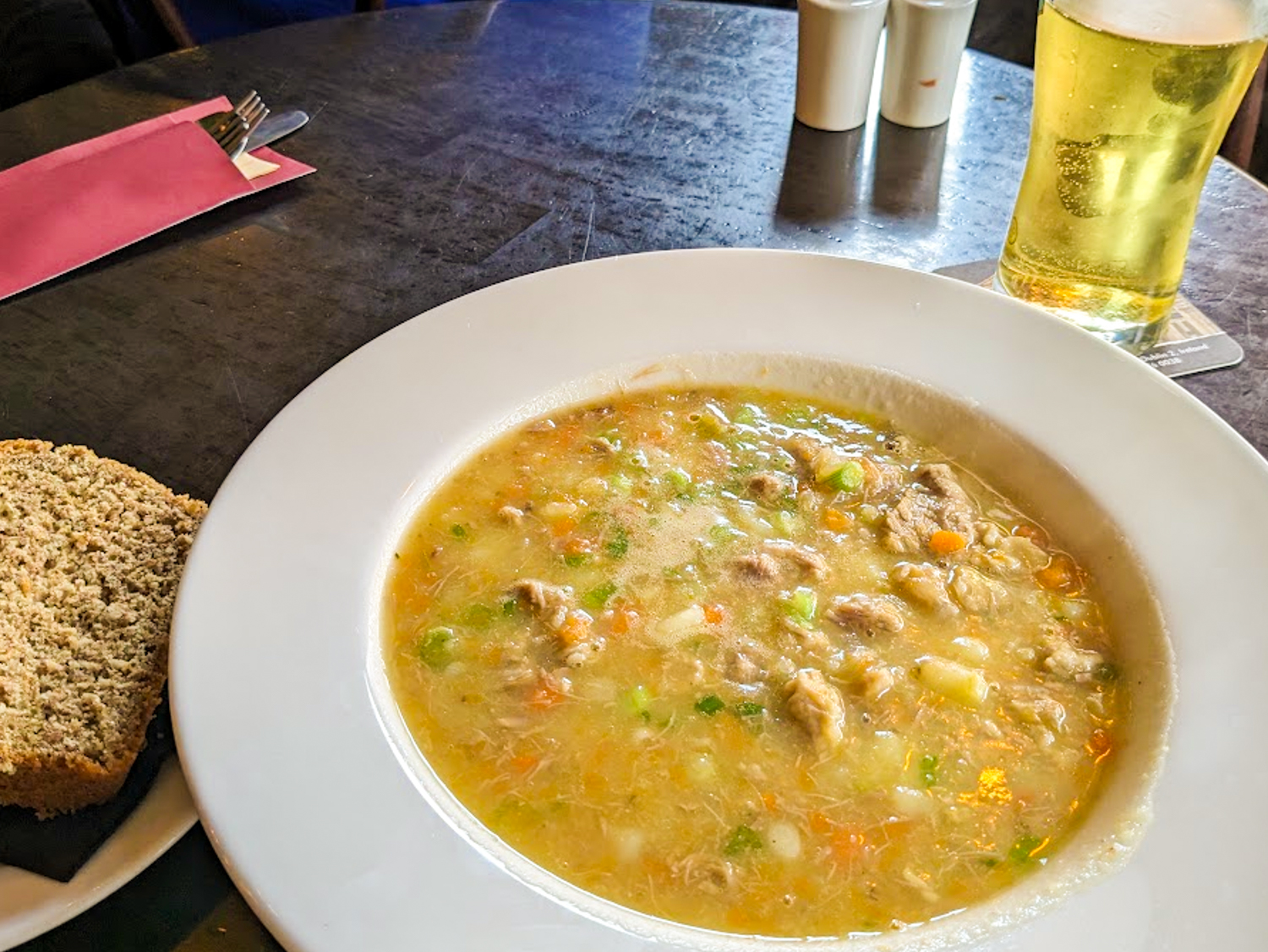
Irish food feels like coming home. It just invites a feeling of sitting by the fireplace in a cozy cottage on the water, surrounded by friends and family. Whether it’s seafood chowder, cottage pie, or classic fish and chips, hearty, feel-good food is everywhere in this country. If you’re eating out for all your meals, though, you’re definitely going to notice a dent in your budget.
If you want to start your day off with a lot of food, look no further than the traditional Irish Breakfast. Similar to the Full English from across the channel, you’ll end up with some combination of bacon, sausages, baked beans, eggs, mushrooms, tomatoes, black and white pudding, and toast. You’ll pay around €15 ($16.50) for it, although it’s not uncommon to see half-sized versions on the menu for those who’d like to save a bit of money (and their arteries).
You don’t have to go the traditional route, though, at least not when you’re in a major city. Especially in Dublin, but elsewhere as well, there are plenty of brunch-style cafes with a wide range of healthier options. I’ve had everything from shakshuka and granola bowls to salmon and eggs and the ubiquitous avocado on toast, paying €12-15 ($13-16.50) each time.
Pub meals typically offer the best value, especially outside the tourist areas of major cities. There, it’s not hard to find a delicious, filling meal of rich Irish stew and soda bread, fresh fish and chips, or tasty burgers for around €15-20 ($16.50-22) per person. A similar meal at a more upscale restaurant will be more like €20-25 ($22-27).
It’s worth looking out for restaurants that offer lunchtime or early bird specials. Often during the middle of the week, at certain times before the dinner rush, restaurants will offer full meals at a discounted rate.
If you’re staying at accommodation with shared kitchens, this is a fantastic way to save money on food. When I spent money on groceries, I usually paid around €60 ($65) per week, or €8.50 ($9.50) per day for basic things like pasta and vegetables.
If the place you’re staying at includes a free breakfast, I’d definitely suggest taking advantage of it. Especially if it’s a cooked breakfast, but even if it’s a lighter continental option, it often means you can get by with something small like a sandwich or wrap for lunch while you’re out exploring, and then opt to cook dinner in the evenings. Then you’ll average around €20 ($24) per day.
Fancy a pint of Guinness or my personal favorite, Smithwick’s Irish Red? You’re looking at around €6 for every additional bevvy that you tack on, which you’ll be tempted to do at many points! I’d suggest going easy on the drinks in Temple Bar and other major tourist spots, though: prices there can be a lot higher than elsewhere!
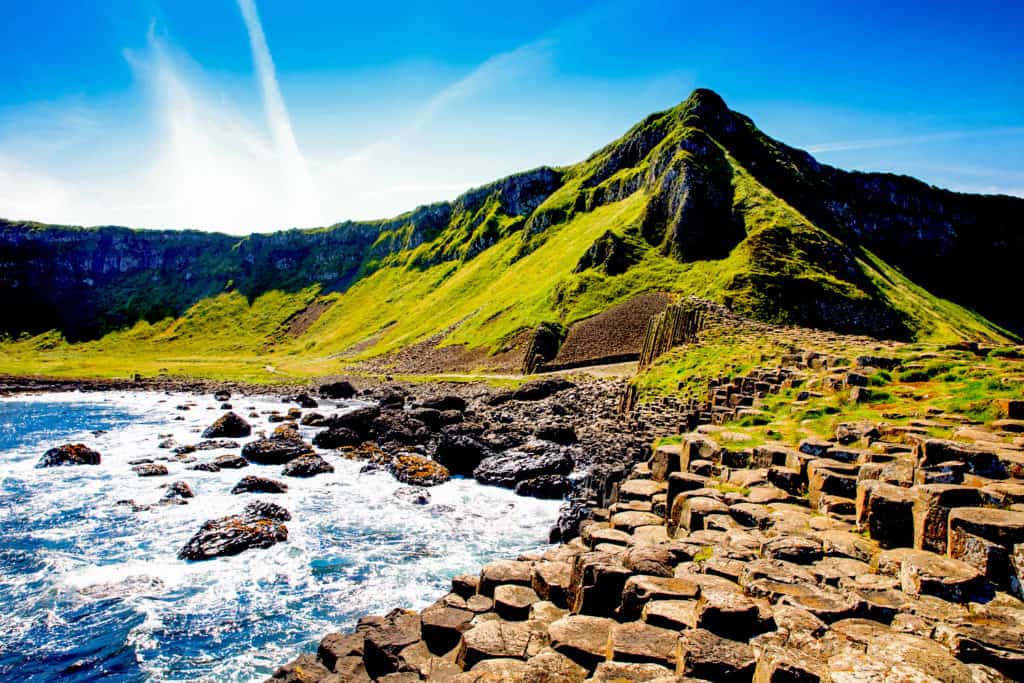
The Cost of Activities and Entrance Fees in Ireland
The activities in Ireland are so much fun! The rich history, incredible landscapes and quirky attractions will make memories to last a lifetime. I found most activities and entrance fees to be reasonably priced, at least compared to some other places in Europe.
Without a doubt, my favorite experiences were taking a tour of the Ring of Kerry and Dingle Peninsula Tour. These are spectacular drives, with incredibly lush mountains and ocean views that I couldn’t tear my eyes away from. I went with Paddywagon for my tours, and felt very taken care of. All I needed to do was sit back and enjoy the drive: it was nice to be able to just gaze out the window and let someone else do the driving! They made sure to stop frequently so we could get out, take pictures, and see everything up close.
I also enjoyed seeing the Cliffs of Moher, Giant’s Causeway, experiencing the Guinness Storehouse and kissing the Blarney Stone. When I think about my time in Ireland, these are always the first activities that come to mind.
Unless you’re a huge history buff, I personally thought that seeing The Book of Kells in Dublin was overrated and overpriced. But everything else is worth it!
Here’s a breakdown of some of the costs you might expect for the top attractions in Ireland:
- Blarney Castle and Stone: €22/$24 (online discount)
- Guinness storehouse in Dublin: €20/$22 (online only)
- Cliffs of Moher: free
- The Book of Kells and Trinity College Dublin: €25/$27
- Giant’s Causeway: free
- Carrick-a-Rede rope bridge: €15.50/$17
- Connemara National Park: free
- 3-day tour of southern Ireland (Ring of Kerry, Dingle Peninsula, Cliffs of Moher, and Galway): €389/$422 (including accommodations, entrance fees, and breakfasts)
If you’re like me, and love to make the most of time, then tours are really a great way to experience a country. I recommend hoping over to Get Your Guide for a range of activities and tours, like the Wild Wicklow Day Tour from Dublin (€30/$33), Tour of Connemara National Park (€35/$38), Aran Islands & Cliffs of Moher Cruise (€70/$76), or a Game of Thrones studio tour (€34.50/$38).
The Cost of Travel Insurance in Ireland
If you’ve read any other posts on Never Ending Footsteps, you’ll know that I’m a great believer in travelling with travel insurance. I’ve seen far too many Go Fund Me campaigns from destitute backpackers that are unexpectedly stranded in a foreign country after a scooter accident/being attacked/breaking a leg with no way of getting home or paying for their healthcare. These costs can quickly land you with a six-figure bill to pay at the end of it.
In short, if you can’t afford travel insurance, you can’t afford to travel.
Travel insurance will cover you if your flight is cancelled and you need to book a new one, if your luggage gets lost and you need to replace your belongings, if you suddenly get struck down by appendicitis and have to be hospitalised, or discover a family member has died and you need to get home immediately. If you fall seriously ill, your insurance will cover the costs to fly you home to receive medical treatment.
I use SafetyWing as my travel insurance provider, and recommend them for trips to Ireland. Firstly, they’re one of the few companies out there who will actually cover you if you contract COVID-19. On top of that, they provide worldwide coverage, don’t require you to have a return ticket, and even allow you to buy coverage after you’ve left home. If you’re on a long-term trip, you can pay monthly instead of up-front, and can cancel at any time. Finally, they’re way cheaper than the competition, and have a clear, easy-to-understand pricing structure, which is always appreciated.
With SafetyWing, you’ll pay $1.50 a day for travel insurance.
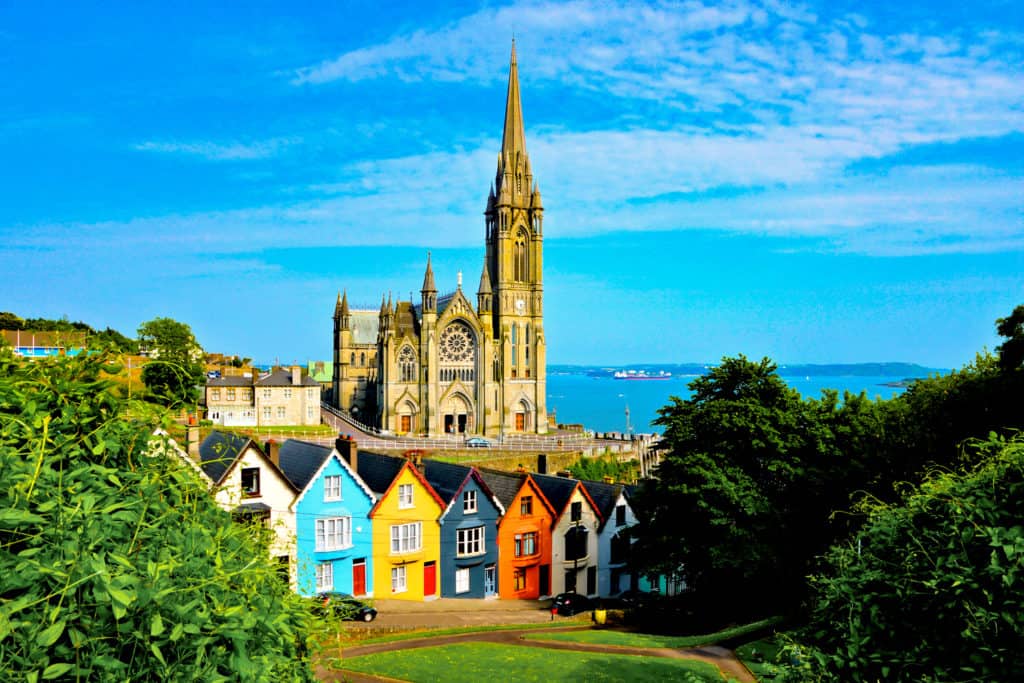
How Much Does it Cost to Travel in Ireland?
It’s time to tally up all of my expenses to see my total travel costs!
- Accommodation: €159/$172 per day between two (€79.50/$86 each)
- Transportation: €20/$22 per day
- Food: €34/$37 per day
- Activities/Entrance Fees: €23/$25 per day
Average amount spent in Ireland: €156.50/$170 a day!
What do you think? Are the costs to travel in Ireland about what you expected, or is it more or less expensive? Let me know!
Author bio: Born and raised in Toronto, Lydia has found “home” throughout her travels around the world. She’s a passionate storyteller and writer and you can usually find her dreaming about new adventures or having a deep conversation with a friend.
Related Articles on Ireland
💰 The Cost of Travel in Dublin: A 2024 Budget Breakdown
☘️ The Absolute Best Things to Do in Dublin, Ireland

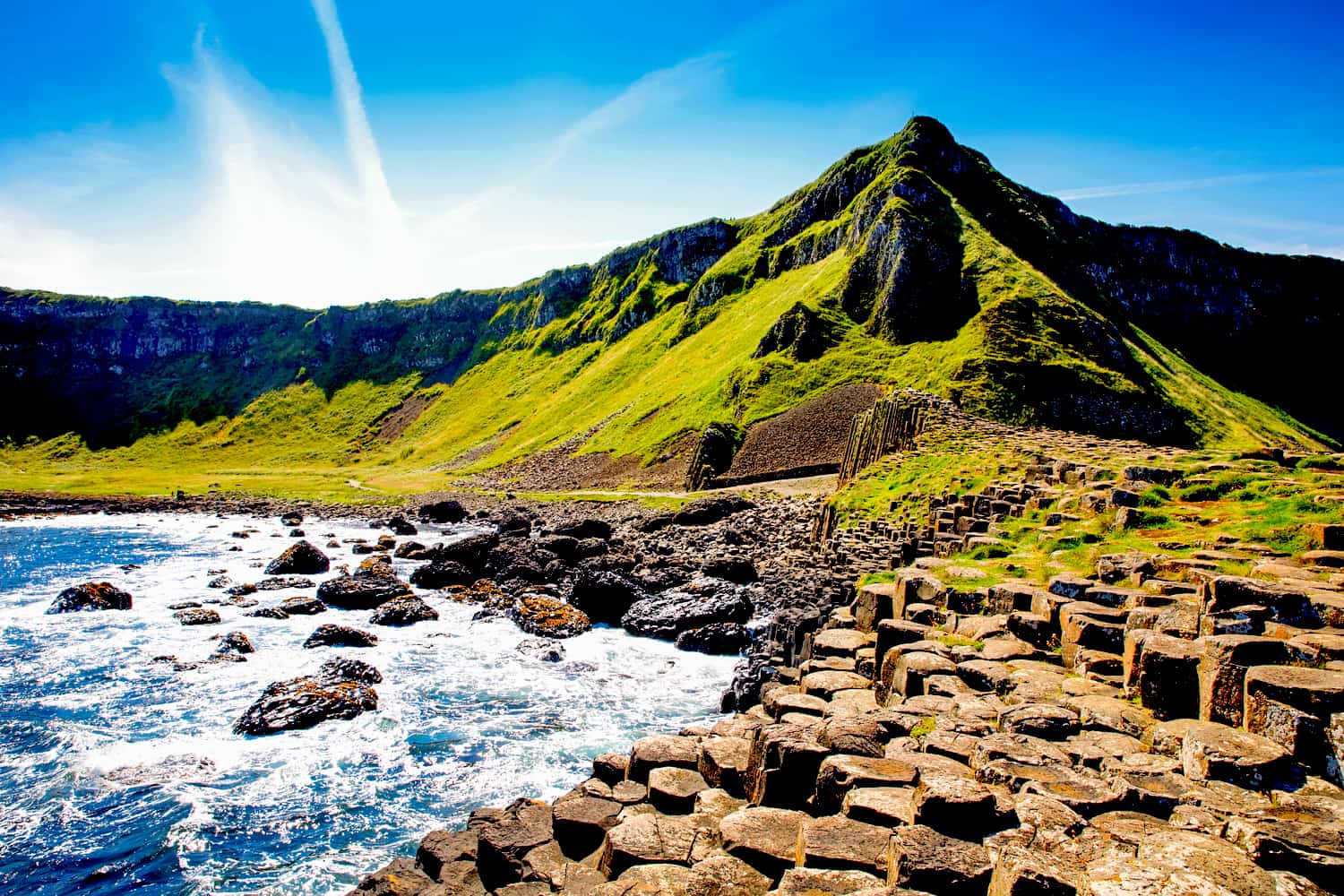






Hi Lauren- thanks for this info. You want to check your math on these $ to pound conversions above; many are reversed (or leftover from when this was originally written perhaps and the pound was higher than the dollar?)
Hi LeeAnn! There aren’t any pound amounts in this article — do you mean Euros? I’ve double checked all the numbers and the exchange rate is still accurate as of today. The only thing I can think of is that you’re interpreting my Euro (€) prices as pounds (£)!